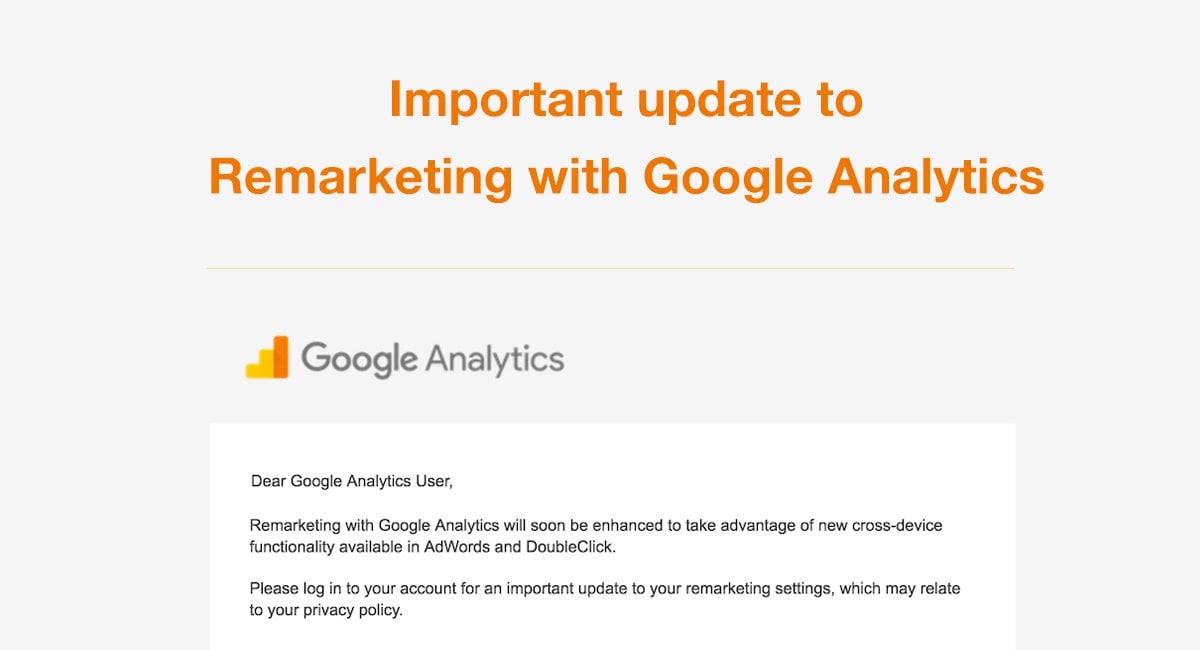Exactly How to Take Advantage Of Remarketing In Google Analytics for Your Service
Wiki Article
Using Remarketing in Google Analytics: A Comprehensive Guide
Harnessing remarketing in Google Analytics supplies services a strategic side in reaching out to prospective customers. This overview will certainly drop light on the important actions entailed in using the complete potential of remarketing in Google Analytics, leading to boosted advertising and marketing results.Understanding Remarketing in Google Analytics
Remarketing in Google Analytics permits services to strategically target customers who have formerly engaged with their website or mobile application. By leveraging data from Google Analytics, businesses can produce customized remarketing checklists based on customer habits, such as pages checked out, actions taken, or details goals achieved. This powerful device allows businesses to re-engage with individuals who have actually shown rate of interest in their solutions or products, inevitably enhancing the probability of conversion.Recognizing the different kinds of remarketing methods is essential for a successful project - What Is “Remarketing” In Google Analytics?. Google Analytics offers numerous options, consisting of typical remarketing, dynamic remarketing, and remarketing listings for search advertisements (RLSA) Each type offers an unique objective and can be tailored to meet particular marketing objectives
In addition, analyzing the performance of remarketing campaigns is necessary for enhancing results. Google Analytics supplies useful insights into the efficiency of various remarketing techniques, allowing companies to make data-driven decisions and fine-tune their targeting technique. By continually adjusting and monitoring remarketing efforts based on analytics information, organizations can optimize ROI and drive success in their advertising and marketing campaigns.
Establishing Remarketing Projects

After setting up target market listings, the next action is to connect Google Analytics with Google Ads. By linking these 2 systems, companies can effortlessly transfer target market checklists from Google Analytics to Google Ads for remarketing objectives. This assimilation enables for more specific targeting and much better project efficiency.
Once the accounts are connected, services can create remarketing projects in Google Ads making use of the audience details previously specified in Google Analytics. These campaigns can be customized with details ad creatives, messaging, and bidding methods to efficiently re-engage with previous visitors and drive conversions. By adhering to these steps, services can leverage the power of remarketing to boost their advertising efforts and enhance ROI.
get redirected here
Making Use Of Audience Division Strategies

Predefined segments in Google Analytics enable you to swiftly assess common audience classifications fresh customers, returning users, or users that finished a specific goal on your additional reading web site. Personalized sectors, on the various other hand, enable you to create distinct sections based on particular requirements that are necessary to your organization purposes. Dynamic remarketing checklists instantly adjust based upon customer actions, revealing personalized advertisements to users that have actually connected with your website particularly means.
Studying Remarketing Efficiency Metrics
Upon reviewing the effectiveness of remarketing campaigns in Google Analytics, the evaluation of vital performance metrics gives beneficial understandings into audience interaction and conversion rates. By delving into metrics such as click-through rates (CTR), conversion prices, cost per procurement (CPA), and return on ad invest (ROAS), online marketers can determine the success of their remarketing efforts. Examining these metrics enables marketing professionals to maximize campaigns, fine-tune target market targeting, and allot budget plans successfully to enhance overall remarketing efficiency.Maximizing Remarketing Strategies
When refining remarketing techniques in Google Analytics, concentrating on target market segmentation is critical for accomplishing project success. By separating your target market into particular sections based upon their habits, demographics, or passions, you can customize your advertisements more efficiently to every group. This targeted technique boosts the chance of involving customers who have actually currently revealed passion index in your solutions or items, bring about greater conversion prices.An additional essential aspect of optimizing remarketing approaches is continuously testing and refining your projects (What Is “Remarketing” In Google Analytics?). A/B screening various advertisement creatives, messaging, or offers can help you identify what resonates best with your audience and drives one of the most conversions. By assessing the efficiency of these examinations in Google Analytics, you can make data-driven choices to enhance your remarketing efforts further
Furthermore, leveraging dynamic remarketing can significantly boost your project results. This attribute enables you to show personalized ads to customers based upon their past interactions with your internet site, showcasing items or solutions they have actually previously viewed. By supplying customized content to customers based upon their actions and rate of interests, dynamic remarketing can aid boost interaction and drive conversions.
Conclusion
Finally, taking advantage of remarketing in Google Analytics is a calculated method to target users that have formerly engaged with a website. By developing personalized target market listings and utilizing target market segmentation approaches, services can optimize remarketing projects for increased conversion prices. Evaluating performance metrics and continuously enhancing approaches are essential for optimizing the performance of remarketing efforts.Google Analytics provides numerous choices, including standard remarketing, dynamic remarketing, and remarketing lists for search advertisements (RLSA)After establishing up audience listings, the following step is to connect Google Analytics with Google Advertisements. By linking these 2 systems, companies can flawlessly transfer target market listings from Google Analytics to Google Advertisements for remarketing purposes.When the accounts are connected, organizations can create remarketing campaigns in Google Advertisements making use of the audience notes formerly specified in Google Analytics.When refining remarketing strategies in Google Analytics, focusing on audience division is extremely important for achieving campaign success.
Report this wiki page